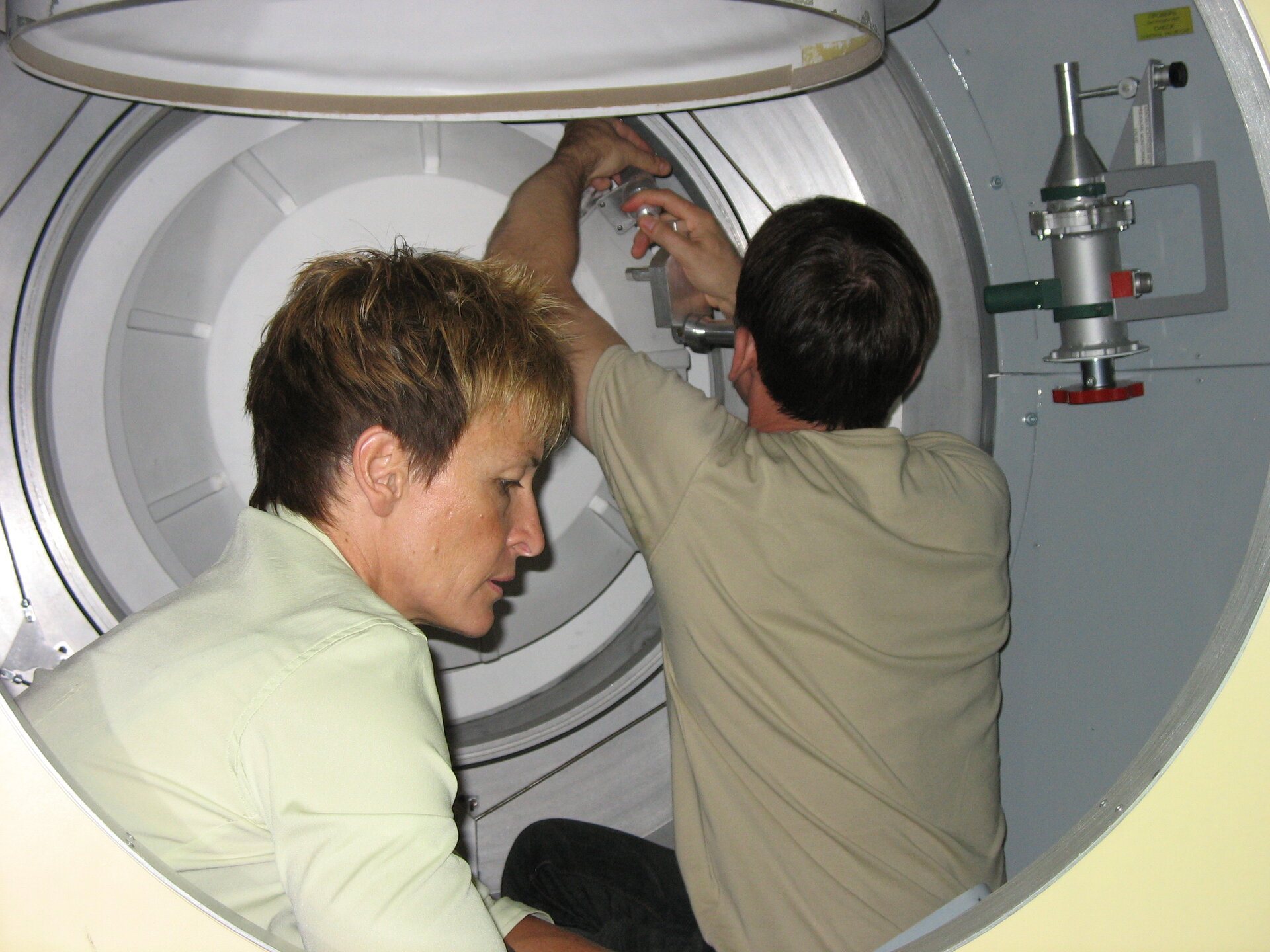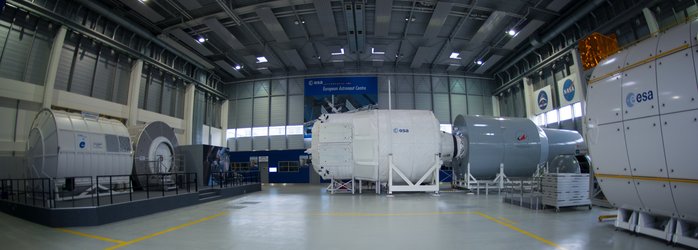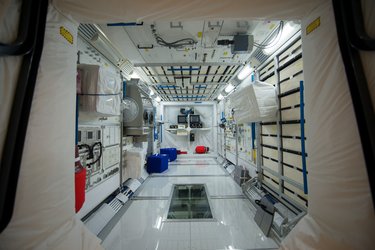Attached phase operations
In the mock-up, the astronauts mainly train operations that are necessary once ATV is attached to the International Space Station.
They learn how to open the ATV's hatch for the first time, an operation known as 'ingress'. They also train how to connect the complex water transfer system used to pump water from the ATV tanks to the Station tanks or into portable Russian water containers called ЕДВ.
In addition, the crew learns how to transfer gas from ATV to the Station. ATV can transport two types of gas (chosen from air, oxygen and nitrogen) on each flight.
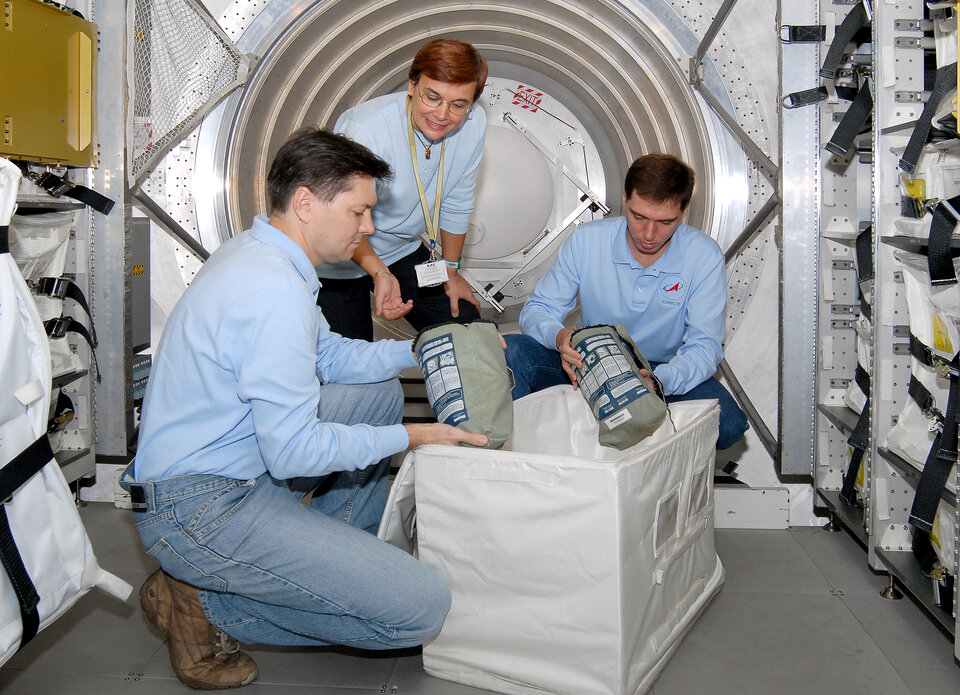
Part of the ATV attached phase training is spent learning to prepare ATV for departure. Following departure from the Station, ATV burns up in the Earth’s atmosphere. Preparing for departure may seem quite straightforward since you would think it is simply a matter of throwing all the Station’s waste into the ATV and casting off. In reality, it is more complicated.
ATV must be loaded in a specific way to ensure the weight of the cargo is thoroughly balanced. If ATV is off-balance, the thruster control of the vehicle is more difficult to calculate because the centre of mass is not in the correct location.

Emergency operations
As in everyday life on Earth, unexpected things can happen in space. Computers can crash and instruments can catch fire – with the substantial difference that astronauts on the ISS cannot call in an IT specialist or the fire brigade to fix the problem. They have to be able to deal with it themselves, on the spot. Mishaps such as these might be only a nuisance when they happen on Earth, but in space the consequences can be much more serious.
For this reason it is vital for the trainees to know how to react in emergency situations. This is trained in a separate block of lessons in hands-on simulations inside the ATV mock-up.
Emergency training centres on two situations: fire and depressurisation. The crew is already thoroughly trained to react to these two situations if they occur on the Station. The training at EAC shows how ATV fits into these standard emergency procedures.
The crew must react to these two critical emergencies in a timely manner. The instructors ensure the crew has the practice s/he needs to be able to respond to the situation in the time required.
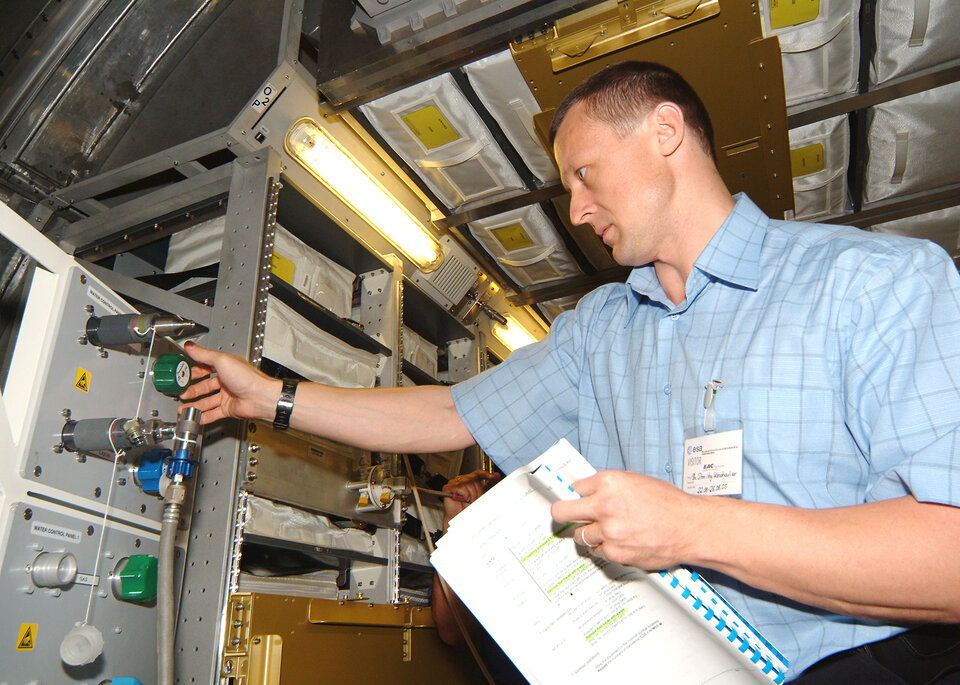
Instructor training
All crew instructors or astronaut trainers – and all lessons developed and given by them – have to pass several reviews including a final so-called Training Readiness Review (TRR). Training experts and astronauts from all ISS partners participate in the TRR. Only after their final approval are the lessons and the instructors teaching them certified for crew training.
Certified instructors not only teach astronauts and cosmonauts – their responsibilities reach a lot further. They are involved in validating documentation needed on board the ISS and they help develop procedures used at the control centres in Toulouse, Moscow and Houston during an ATV mission.


